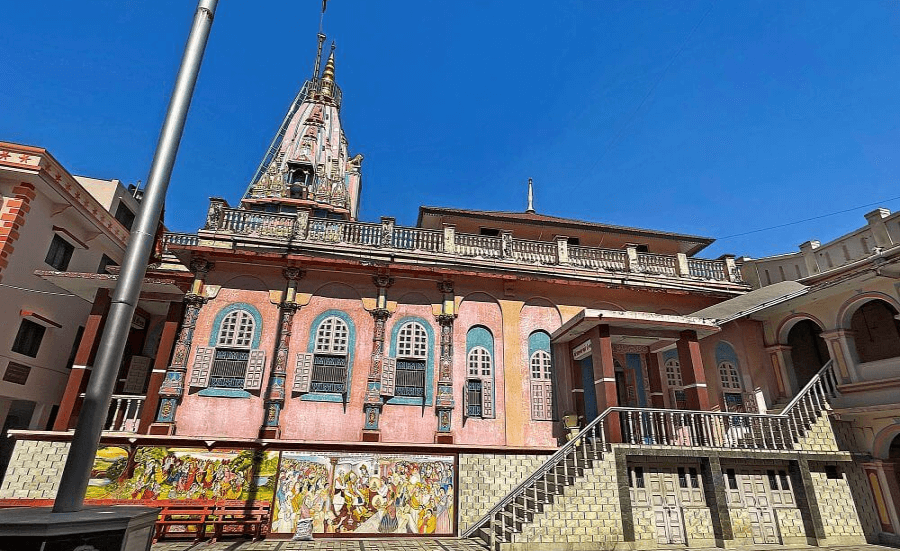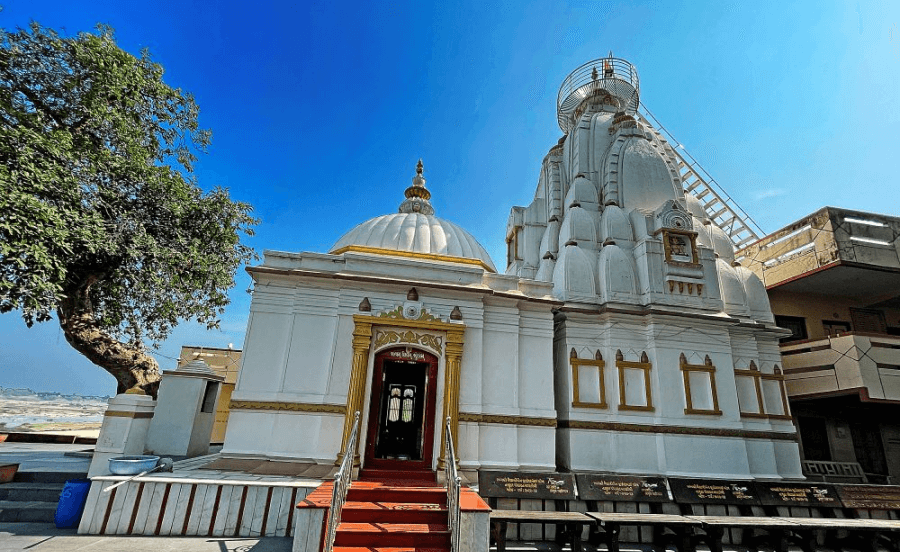
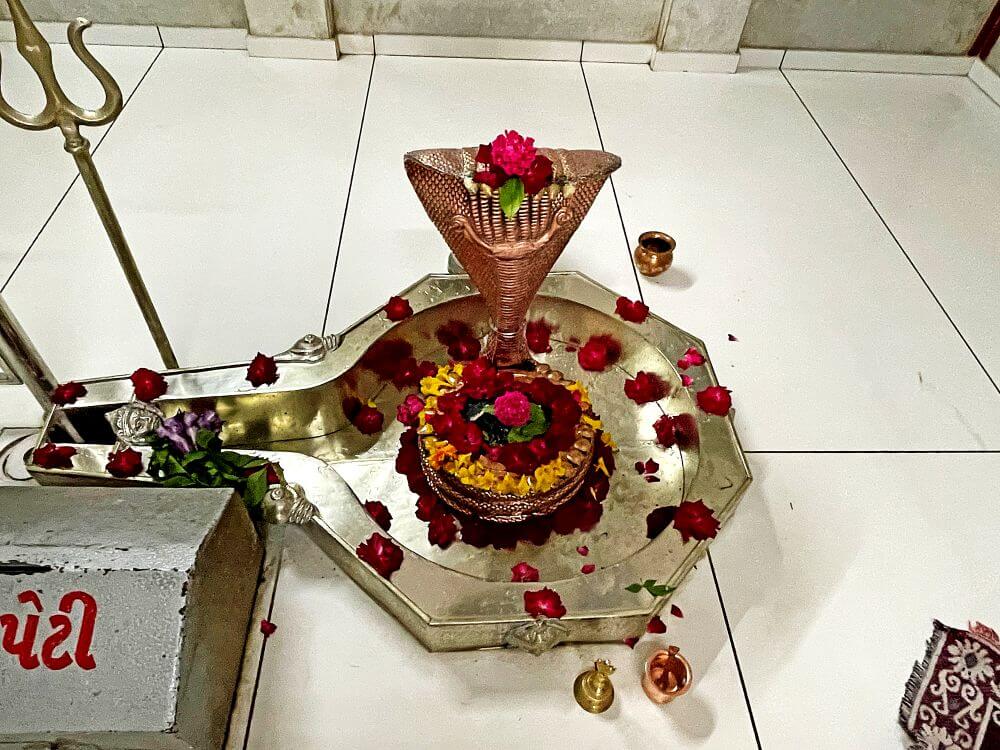 Located on the banks of the Tapi River, Wagheshwar Mahadev Temple is one of Gujarat’s ancient temples. This revered site is mentioned in the Tapi Purana, which narrates a story of a battle between Bhima, the mighty Pandava, and Lord Shiva in the form of a tiger. Devotees believe that footprints of Bhima, Goddess Parvati in the form of a cow, and Lord Shiva in his tiger form can still be seen on the riverbed. The temple’s sacred Shivlinga is said to fulfil the wishes of devotees who worship it with faith, drawing hundreds of visitors each year.
Located on the banks of the Tapi River, Wagheshwar Mahadev Temple is one of Gujarat’s ancient temples. This revered site is mentioned in the Tapi Purana, which narrates a story of a battle between Bhima, the mighty Pandava, and Lord Shiva in the form of a tiger. Devotees believe that footprints of Bhima, Goddess Parvati in the form of a cow, and Lord Shiva in his tiger form can still be seen on the riverbed. The temple’s sacred Shivlinga is said to fulfil the wishes of devotees who worship it with faith, drawing hundreds of visitors each year.
Chapter 35 of the Tapi Purana recounts that during their exile, the Pandavas stayed along the Tapi River with their mother, Kunti. On one Ekadashi (the eleventh day of the lunar fortnight), Bhima went to bathe in the river and lay down in the water, causing it to swell and flood a nearby Mahadev temple. 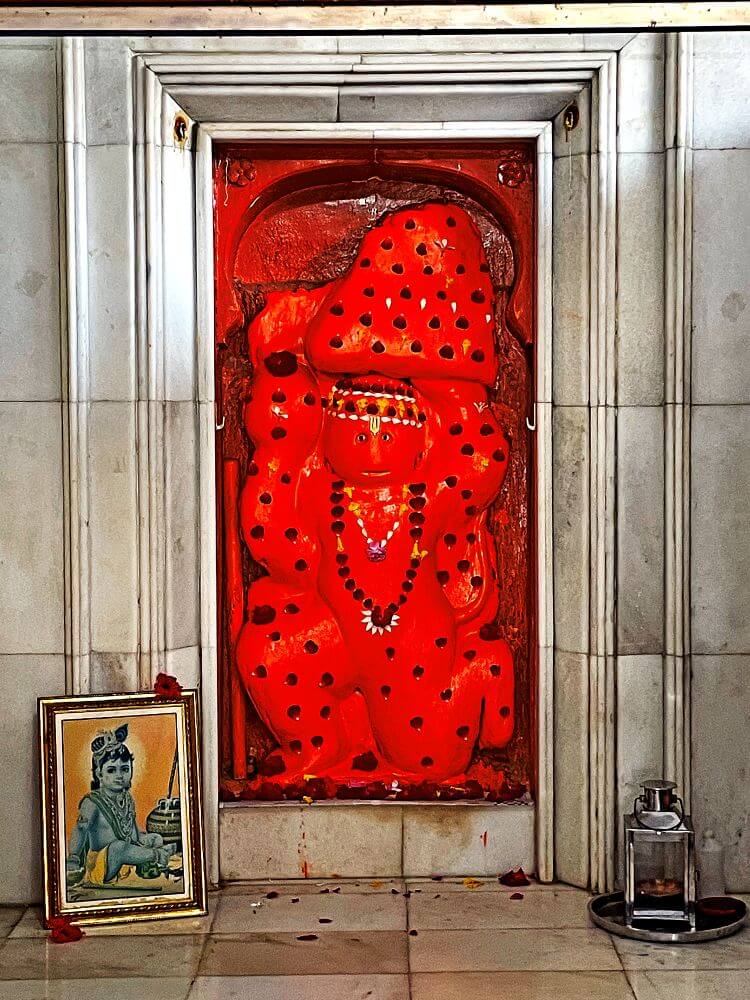 Concerned about the situation, Lord Shiva and Parvati devised a plan to wake Bhima. Shiva instructed Parvati to take the form of a cow, while he transformed into a tiger and attacked her. As expected, Bhima rushed to defend the cow and engaged in a fierce battle with the tiger. During the fight, Bhima sustained injuries on his right side. Impressed by his bravery, Lord Shiva revealed his true form and blessed Bhima, declaring that his right side would be as strong as a vajra (divine weapon). From that time, the temple came to be known as Wagheshwar Mahadev, in honour of Shiva’s tiger form.
Concerned about the situation, Lord Shiva and Parvati devised a plan to wake Bhima. Shiva instructed Parvati to take the form of a cow, while he transformed into a tiger and attacked her. As expected, Bhima rushed to defend the cow and engaged in a fierce battle with the tiger. During the fight, Bhima sustained injuries on his right side. Impressed by his bravery, Lord Shiva revealed his true form and blessed Bhima, declaring that his right side would be as strong as a vajra (divine weapon). From that time, the temple came to be known as Wagheshwar Mahadev, in honour of Shiva’s tiger form.
The temple is said to have played a role in India’s freedom movement. During British rule, freedom fighters used the temple as a location to print and distribute revolutionary leaflets, spreading awareness among the people.
The temple is approximately 16 km from Bardoli. A large open courtyard greets visitors, with a two-storey building leading to the temple precinct. Upon entering, one sees lime and peepal trees under which cement-pillared pavilions provide shade. Beneath the lime tree is an idol of Ganesh, while the peepal tree shelters a Shivlinga. In front of these are a platform with a Nandi statue and a turtle. To the left of this platform is a large pavilion featuring the seat and statue of Mouni Bapu, a revered saint. Behind this are temples dedicated to Ram-Lakshman-Sita and Hathila Hanuman (Determined Hanuman).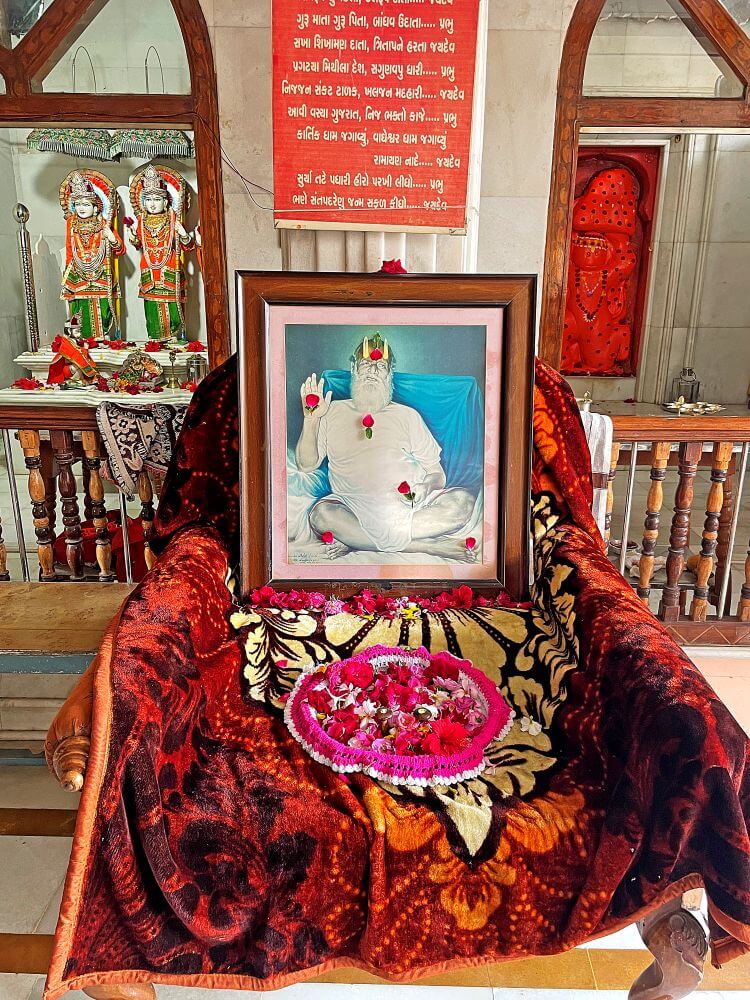
To the right is the main Wagheshwar Mahadev temple. The temple comprises a sabhamandapa (assembly hall) and a garbhagriha (sanctum). The sabhamandapa features a domed ceiling adorned with an amalaka (circular ribbed motif) and a kalasha (pinnacle). The sanctum’s shikhara (spire) follows the Urushringa style, with smaller spires adorning its main structure. Each side of the shikhara has niches housing idols of deities.
The sabhamandapa has three entrances, with the main one facing a shrine dedicated to the three-faced deity Dattatreya. Inside, a marble statue of Nandi sits on a platform, alongside a turtle. The niches in the assembly hall walls house idols of Goddess Amba on the left and Ganesh on the right.
The dome of the sabhamandapa is adorned with exquisite paintings of Vishnu’s ten avatars (Dashavatara), each depicting a significant moment from their legends. For instance: Vishnu rescuing four children in his Matsya (fish) form, Kurma (tortoise) Vishnu defeating Shankhasura, Krishna slaying Kansa, Vamana placing his foot on Bali’s head with Bali’s throne and attendants in the background, a vivid depiction of Ram and Ravan in battle. The ceiling also features images of women adorned in Maharashtrian-style saris, holding garlands or standing gracefully. 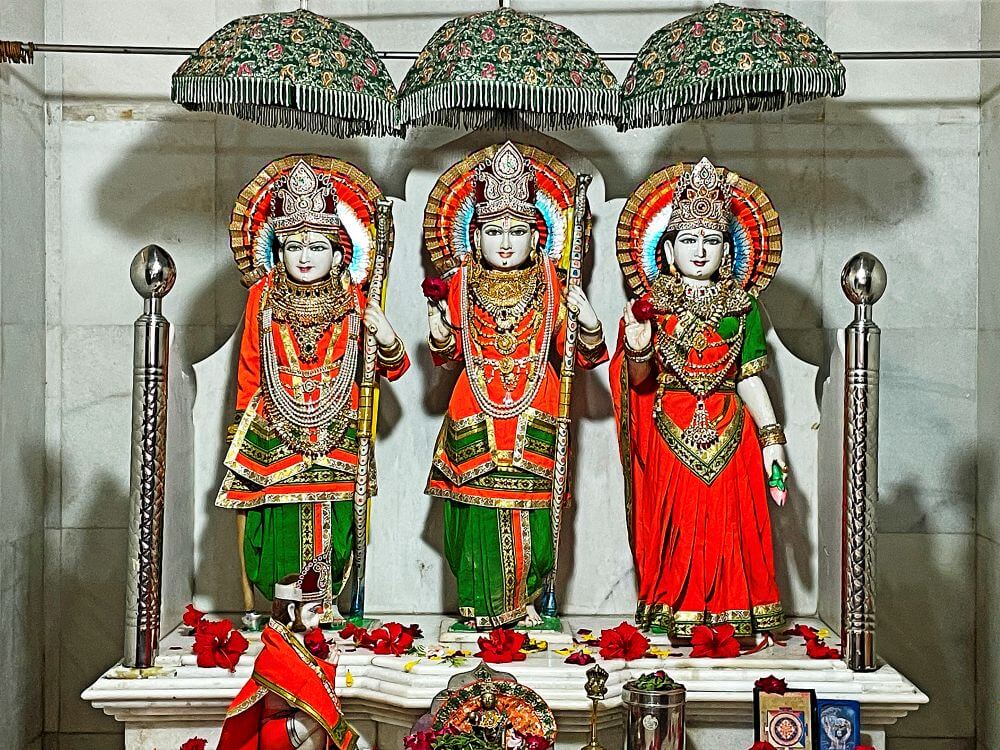 The upper walls of the hall showcase bas-reliefs of Krishna and Radha playing musical instruments and dancing. A captivating sculpture of Shiva and Parvati in conversation can also be seen. Shiva is seated with one leg folded under the other, while Parvati adjusts her sari with one hand.
The upper walls of the hall showcase bas-reliefs of Krishna and Radha playing musical instruments and dancing. A captivating sculpture of Shiva and Parvati in conversation can also be seen. Shiva is seated with one leg folded under the other, while Parvati adjusts her sari with one hand.
At the centre of the sanctum is the sacred Shivlinga, made of stone and enclosed by a brass shaluunka (base). A large coiled brass snake is wrapped around the linga, with a silver canopy above. On the sanctum’s left wall, a marble idol of Goddess Tapi as a young girl stands next to a statue of Goddess Parvati. On the right wall is a picture of Mouni Bapu.
The temple hosts daily aartis at 7:30 AM and 7:00 PM. During Mahashivratri, the temple is filled with devotees, and many arrive with kavad (decorative water carriers) during the holy month of Shravan. Below the temple lies the wide expanse of the Tapi River, where devotees visit to see the footprints believed to belong to Bhima, Goddess Parvati (in her cow form), and Lord Shiva (in his tiger form).
The temple complex includes a spacious hall for religious ceremonies, a dining facility, and accommodation for visitors. Nearby, there is a modern, star-shaped samadhi temple dedicated to Mouni Bapu, which features a marble idol of the saint. Adjacent to this temple is a samadhi for a sacred cow. Mouni Bapu arrived at Wagheshwar Mahadev Temple on Shravan Purnima in 1960 and spent many years in penance and service to the deity.
